Find out more about the druids and the gorsedd rituals
- Cyhoeddwyd
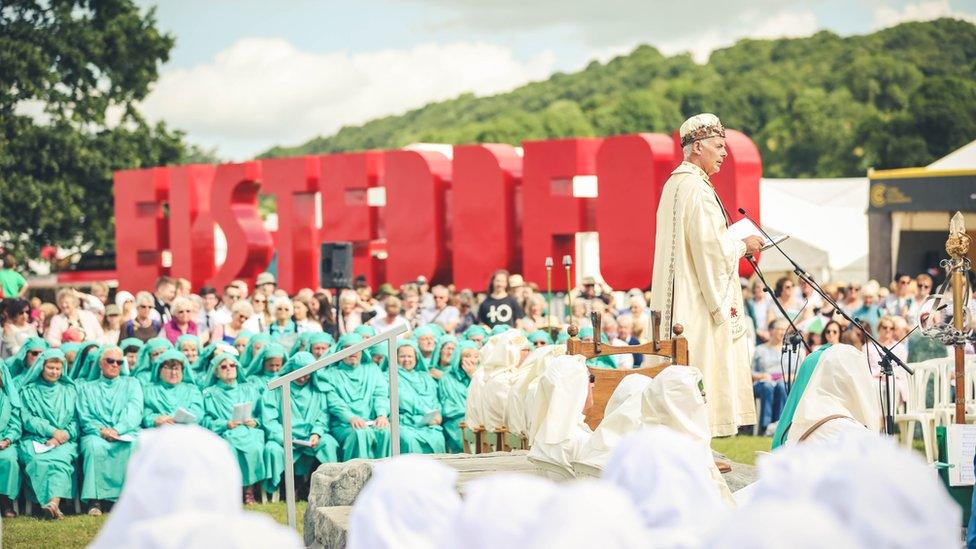
The National Eisteddfod is a key event in the Welsh calendar. It's the largest cultural festival of its kind in Europe and takes place annually during the first week of August, alternating between north and south Wales.
The Gorsedd of the Bards is responsible for all the pagentary of the event, organising the colourful and dramatic Gorsedd Circle rites as well as the Chairing, Crowning and Prose Medal ceremonies on the main festival stage.
Gorsedd members, known as druids, include poets, writers, musicians, artists and others who have made a distinguished contribution to the Welsh nation, the language, and its culture.

Gorsedd origins
The Gorsedd first came together in 1792, not in Wales, but on Primrose Hill in London. The Gorsedd was created by Iolo Morganwg.
One of Wales' most famous and eccentric bard scholars, Iolo Morganwg found inspiration in Welsh poetry, agriculture and archaeology. He put his own spin on druid influences but remained firm in his Christian beliefs.

That he chose to stress his Welsh identity and language in this way points to the primary mission of the Gorsedd of Bards, to honour the literary achievements of Welsh poets and prose writers - and not pagan gods.
The Gorsedd of the Bards first became officially associated with the Eisteddfod at the beginning of the 19th century and the link has continued until the current day.
The Gorsedd Circles and Stones
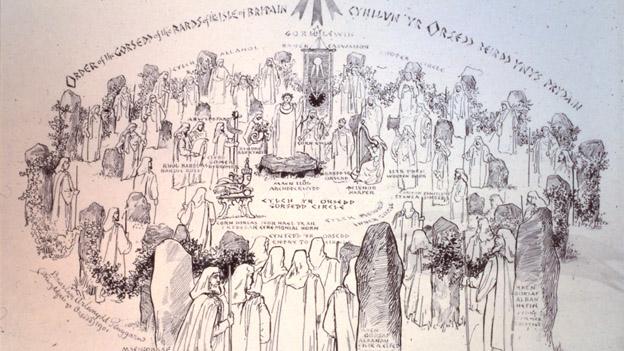
Detailed plan of the Stone Circle
The Gorsedd Circle plays host to the Gorsedd in all its ceremonial splendour.
This detailed plan was drawn up at the end of the 19th century. The standing stones form a circle within which lies the flat-topped Maen Llog (Logan Stone), where the Archdruid stands to conduct the Gorsedd ceremonies.
Many towns and villages in Wales have a circle of Gorsedd stones, left as a mark of a National Eisteddfod being held there. Nowadays though a replica set of man-made stones are moved from Eisteddfod to Eisteddfod.
The Archdruid

This is Mererid Hopwood's first Eisteddfod as Archdruid
The head of the Gorsedd of the Bards is the Archdruid, who is elected for a term of three years and is responsible for conducting the Gorsedd ceremonies during Eisteddfod week.
These ceremonies (the Crowning, the presentation of the Prose Medal and the Chairing) are held to honour literary achievements among Welsh poets and writers.
White robes

White robes are worn by winners of the main Eisteddfod prizes. Those wearing a laurel garland on their headdress are known as Prifeirdd (Chief Bards), and are previous winners of the Chair, Crown and Prose Medal competitions.
Green robes
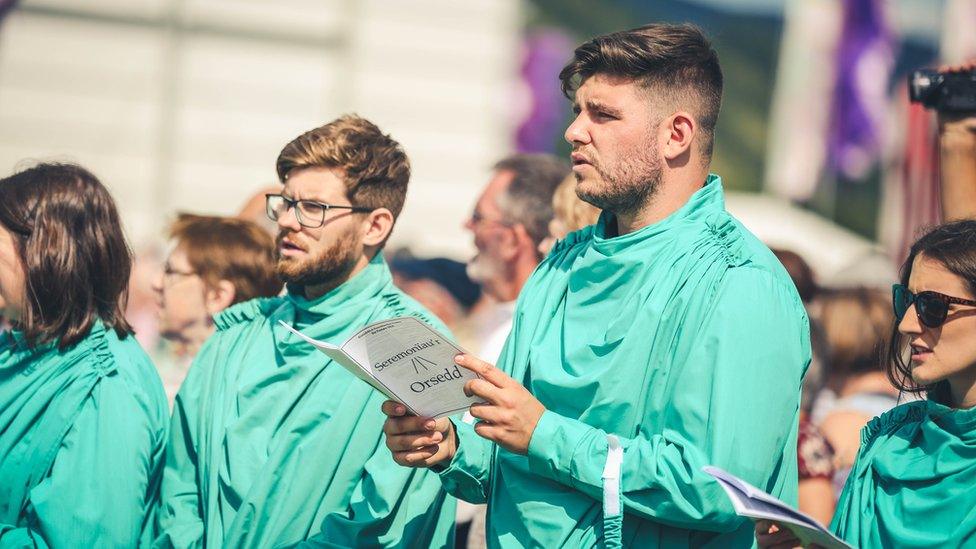
X Factor competitor, Lloyd Macey, in his green robes
Members who wear green specialise in the Arts. This can be honorary membership through outstanding contribution to the arts in Wales, through gaining an Arts degree studied through the medium of Welsh, or by passing a special Eisteddfod exam. The winners of the main Urdd National Eisteddfod competitions also wear green.
Blue robes
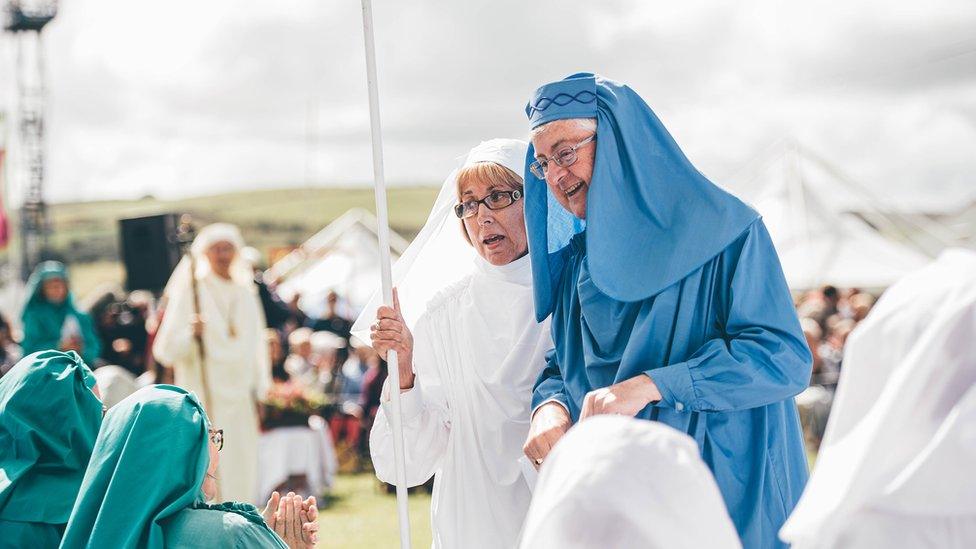
Former First Minister Mark Drakeford - or 'Mark Pengwern' to give his bardic name - was made a member in 2022
Blue robes are for individuals who have made a distinct contribution to their community or the nation in the fields of Law, Science, Sports, Journalism or the Media, or have a degree in a non-arts subject studied through the medium of Welsh.
Corn Gwlad
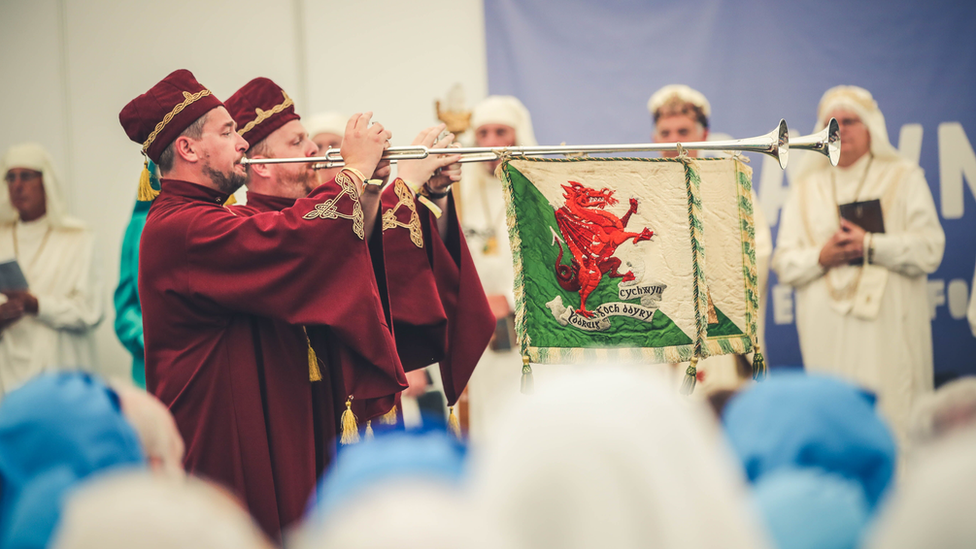
The call of the trumpets is a familiar sound at Gorsedd ceremonies. In particular, listen out for the spine-tingling fanfare as the winning poet or author is called onto the stage during the Crowning, Chairing and Prose Medal ceremonies in the Eisteddfod Pavilion.
Blodeuged
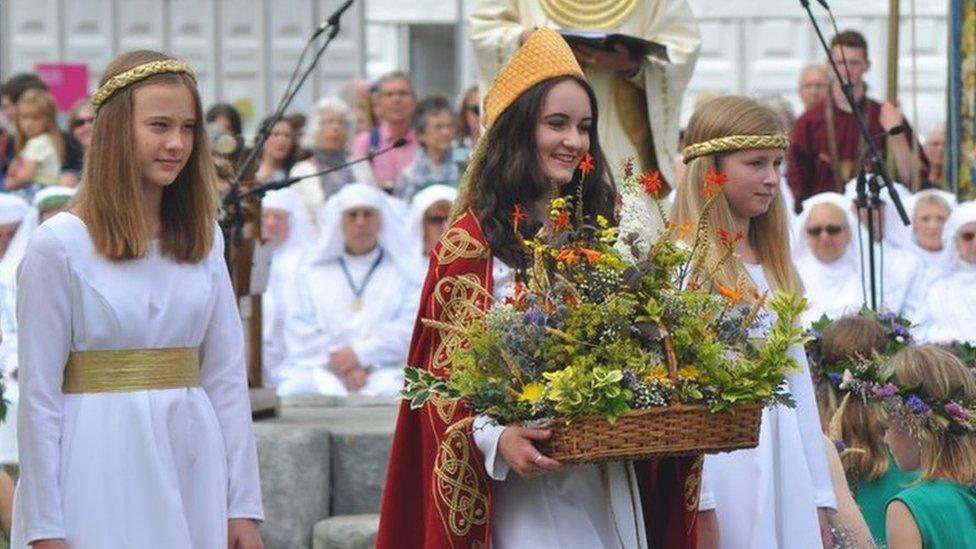
The Blodeuged - a bouquet of meadow flowers symbolising the land of Wales - is presented to the Archdruid by a young person of the area. The gift denotes the desire of Wales's young people to offer their blossoming talents to the National Eisteddfod.
Corn Hirlas
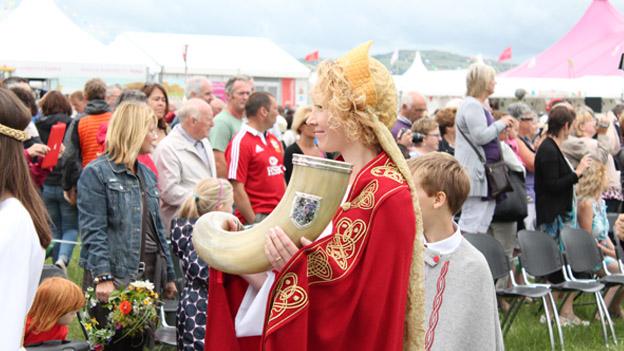
The Corn Hirlas (Horn of Plenty) is presented to the Archdruid by a local adult as a symbol of the wine offered by the host area to welcome the Gorsedd.
The Flower Dance
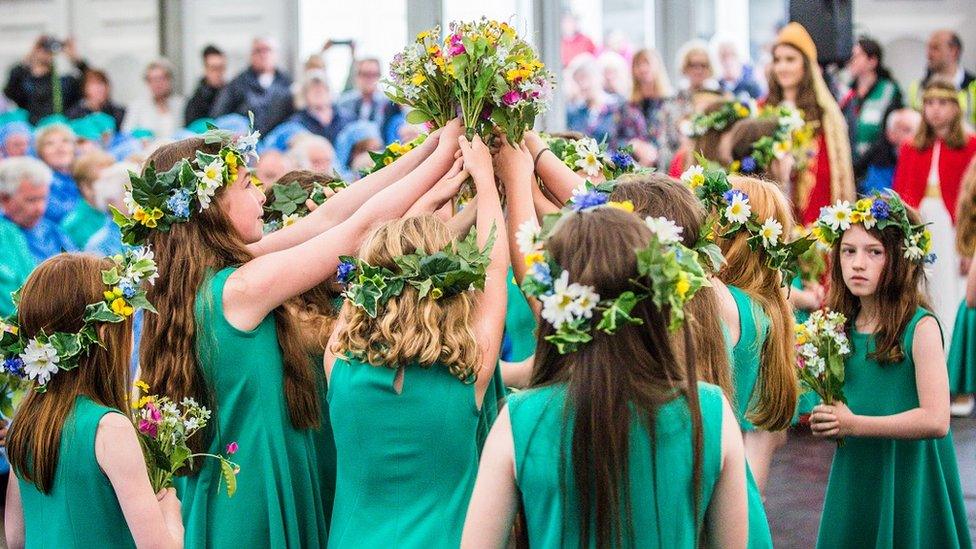
Children from the Eisteddfod area are selected to perform the flower dance which depicts the collecting of wild flowers from the fields. The dance is linked to the presentation of the Blodeuged as two of the dancers add their posies to the main bouquet.
The Grand Sword

Former Welsh rugby international, Robin McBryde, is the Keeper of the Sword
The unsheathing of the Grand Sword is one of the Eisteddfod's most imposing sights. It is also among the oldest of the Gorsedd rituals. However, as a symbol of peace, the sword is never fully unsheathed. Notice also that the sword keeper always carries the sword by its blade rather than the hilt.Find out more about the druids and the gorsedd rituals
Famous druids
Famous druids include Hollywood stars Ioan Gruffudd and Matthew Rhys, singers Bryn Terfel and Caryl Parry-Jones, Archbishop of Wales Andrew John, athletes Tanni Grey-Thompson and Aled Siôn Davies, presenters Alex Jones and Huw Stephens, and Welsh rugby legends George North and Jamie Roberts.
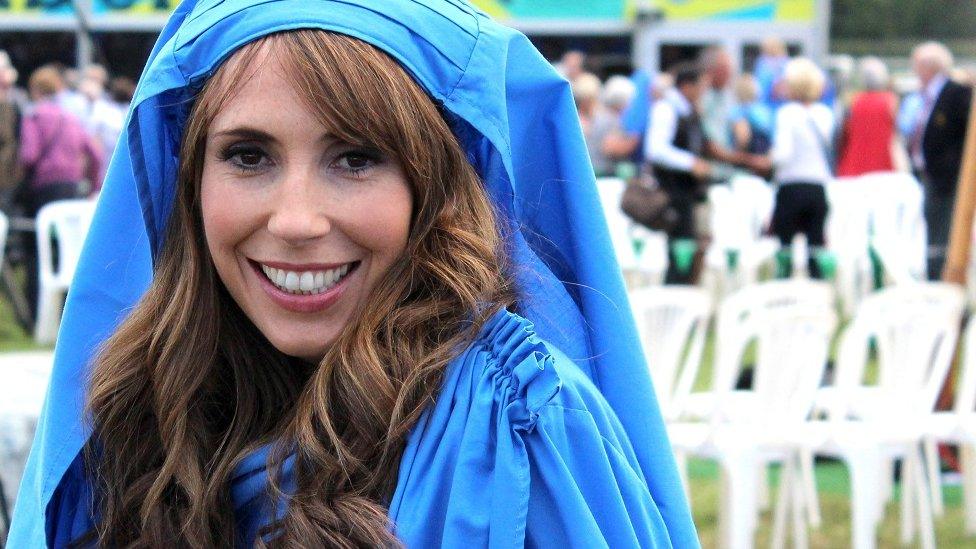
Alex Jones in her blue robes